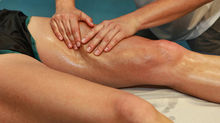Female Sexual Dysfunction in the First Year Postpartum
- The Studio Team
- Jun 6, 2023
- 2 min read
An Australian study revealed that an enormous 64.3% of women experience sexual dysfunction in the first year postpartum1. Despite this high prevalence, only few women seek help themselves. Many health professionals are also neglecting to ask about postpartum sexual health and therefore these women simply aren’t getting referred to us (Physiotherapists) for help.
The International Continence Society defines sexual dysfunction as ‘the complaint of dyspareunia (pain before, during or after sexual intercourse) or impairment of sexual desire, arousal or orgasm.’
Risk factors found to be associated with sexual dysfunction in the first 12 months postpartum include:
3rd and 4th degree perineal tears2,3
Breastfeeding (due to lower levels of estrogen, women can experience increased vaginal dryness and reduced sexual desire)2
Postpartum depression1
Whilst the above risk factors are supported by the research, there are additional factors we should consider that may contribute to sexual dysfunction in the first year postpartum. These include poor sleep and thus less energy, relationship changes, inadequate time and physical space for intimacy, and for some, body image dissatisfaction.
Although awareness surrounding female sexual dysfunction is slowly growing, many people are still unaware that Women’s Health Physiotherapists can play an integral role in treatment. Not only can we assist women struggling in the first year postpartum, but also with sexual dysfunction throughout the lifespan.
Treatment may include:
Advice on appropriate lubrication
Pelvic floor muscle down-training and relaxation strategies
Internal pelvic floor muscle release
Education on graded return to intercourse
Dilator therapy
Therawand use (self release strategies)
Pelvic stretches
Referral to other appropriate health professionals such as GP, sexual therapist or psychologist
Sexual satisfaction is so important in maintaining quality of life for women, their partners and their families. For this reason, it should be a topic of discussion in postnatal consults. As Women’s Health Physiotherapists, we are here to listen and will always work with you to design a treatment plan you are comfortable with.
References
Khajehei M, Doherty M, Tilley PJ, Sauer K. Prevalence and risk factors of sexual dysfunction in postpartum Australian women. J Sex Med. 2015;12(6):1415-26.
Gutzeit O, Levy G, Lowenstein L. Postpartum Female Sexual Function: Risk Factors for Postpartum Sexual Dysfunction. Sex Med. 2020;8(1):8-13.
Cattani L, De Maeyer L, Verbakel JY, Bosteels J, Deprest J. Predictors for sexual dysfunction in the first year postpartum: A systematic review and meta-analysis. BJOG. 2022;129(7):1017-28.

























